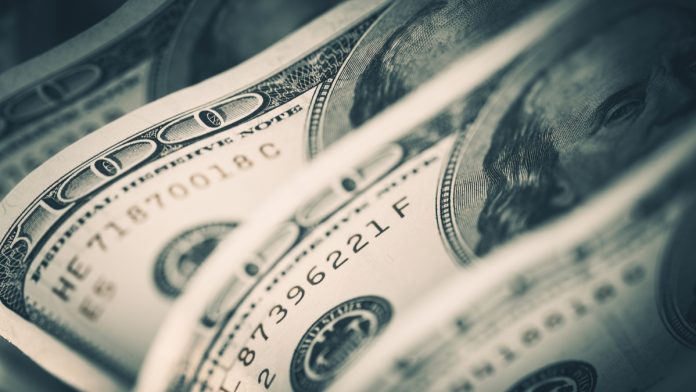Brexit nerves and less dovish than expected FOMC minutes sent the pound US dollar lower in the previous session. The pound US dollar exchange rate dropped 0.3% to close at US$1.2132. The pair is holding steady in early trade on Thursday.
| What do these figures mean? |
| When measuring the value of a pair of currencies, one set equals 1 unit and the other shows the current equivalent. As the market moves, the amount will vary from minute to minute.
For example, it could be written: 1 GBP = 1.28934 USD Here, £1 is equivalent to approximately $1.29. This specifically measures the pound’s worth against the dollar. If the US dollar amount increases in this pairing, it’s positive for the pound. Or, if you were looking at it the other way around: 1 USD = 0.77786 GBP In this example, $1 is equivalent to approximately £0.78. This measures the US dollar’s worth versus the British pound. If the sterling number gets larger, it’s good news for the dollar. |
The pound was broadly out of favour in the previous session as Brexit uncertainty intensified. Whilst EU Council President Donald Tusk rebuffed PM Boris Johnson’s demand to remove the Irish backstop from the Withdrawal Agreement, Angela Merkel has given Boris Johnson 30 days to come up with a better alternative, putting the ball back in the UK’s court. Whilst this offers a glimmer of hope to pound traders that the UK could avoid a no deal Brexit, it is in fact the same message that the EU has been giving over the past year. If you have a better alternative share it.
| Why is a “soft” Brexit better for sterling than a “hard” Brexit? |
| A soft Brexit implies anything less than UK’s complete withdrawal from the EU. For example, it could mean the UK retains some form of membership to the European Union single market in exchange for some free movement of people, i.e. immigration. This is considered more positive than a “hard” Brexit, which is a full severance from the EU. The reason “soft” is considered more pound-friendly is because the economic impact would be lower. If there is less negative impact on the economy, foreign investors will continue to invest in the UK. As investment requires local currency, this increased demand for the pound then boosts its value. |
Barclays Bank said that their base case scenario is now a disorderly Brexit with a rate cut by the Bank of England. French President Emmanuel Macron has also asserted that France considers a no deal Brexit as the most likely outcome. Boris Johnson will meet with Emmanuel Macron today.
With exactly 70 days to go until Brexit, the UK’s exit from the EU will be the central driver of movement in the pound. Pound investors could also turn their attention to data from the Confederation of British Industry. Analysts believe the CBI will provide gloomy reported sales data, highlighting the negative impact of Brexit uncertainty on the UK economy.
US PMI Data In Focus
The dollar moved higher following the release of the minutes from July’s Federal Reserve monetary policy meeting. This was the meeting where the Fed cut interest rates for the first time in a decade.
The minutes showed that there was a broad mix of opinions among policy makers, some believed that the rate cut should be larger, whilst others were of the opinion that no action should be taken. However, the majority believed that the rate rise was a mid-cycle adjustment, rather than the start of a new rate cutting cycle. Dollar investors interpreted the minutes as being less dovish than what they were expecting. As a result, the dollar advanced.
| Why do interest rate cuts drag on a currency’s value? |
| Interest rates are key to understanding exchange rate movements. Those who have large sums of money to invest want the highest return on their investments. Lower interest rate environments tend to offer lower yields. So, if the interest rate or at least the interest rate expectation of a country is relatively lower compared to another, then foreign investors look to pull their capital out and invest elsewhere. Large corporations and investors sell out of local currency to invest elsewhere. More local currency is available as the demand of that currency declines, dragging the value lower. |
Today investors will be looking to US PMI data for further clues as to the health of the US economy. Stronger than forecast readings could ease concerns over a potential slowdown in the US economy and lift the dollar further.
DISCLAIMER
Currencylive.com is a site operated by TransferWise Inc. (“We”, “Us”), a Delaware Corporation.
The content on our site is provided for general information only. It is not intended to amount to advice on which you should rely. You must obtain professional or specialist advice before taking, or retain from, any action on the basis of the content on our site.
Although we make reasonable efforts to update the information on our site, we make no representations, warranties or guarantees, whether express or implied, that the content on our site is accurate, complete or up to date. Some of the content posted on this site has been commissioned by Us, but is the work of independent contractors. These contractors are not employees, workers, agents or partners of TransferWise and they do not hold themselves out as one. The information and content posted by these independent contractors have not been verified or approved by Us. The views expressed by these independent contractors on currencylive.com do not represent our views.





